#afonso v of portugal
Text









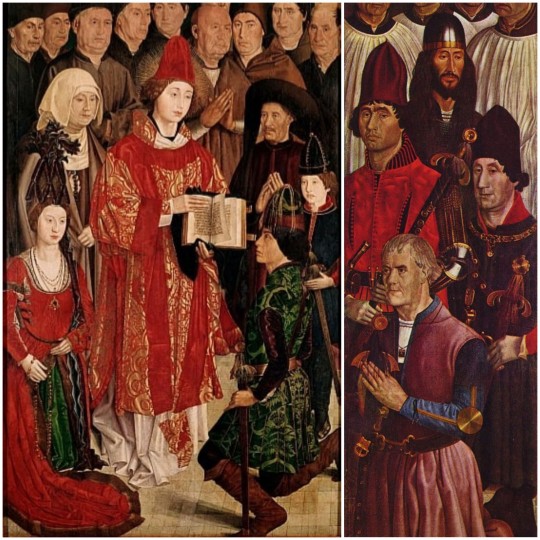
The Bastard Kings and their families
This is series of posts are complementary to this historical parallels post from the JON SNOW FORTNIGHT EVENT, and it's purpouse to discover the lives of medieval bastard kings, and the following posts are meant to collect portraits of those kings and their close relatives.
In many cases it's difficult to find contemporary art of their period, so some of the portrayals are subsequent.
1) John I of Portugal (1357 – 1433), son of Peter I of Portugal and Teresa Lourenço; with his wife, Philippa of Lancaster (1360 – 1415), daughter of John of Gaunt and his wife Blanche of Lancaster
2) His father, Peter I of Portugal (1320 – 1367), son of Afonso IV of Portugal and his wife Beatrice of Castile
3) His sister, Beatrice of Portugal (c. 1354–1381), daugther of Peter I of Portugal and his wife Inês de Castro
4) His brother, John of Portugal (1352 – c. 1396), son of Peter I of Portugal and his wife Inês de Castro
5) His brother, Ferdinand I of Portugal (1345 – 1383), son of Peter I of Portugal and his wife Constanza Manuel de Villena
6) His sister in law, Leonor Teles de Meneses (c. 1350 – c. 1405), daughter of Martim Afonso Telo de Meneses and his wife Aldonça Eanes de Vasconcelos
7) His niece, Beatrice of Portugal (1373 –c. 1420), daughter of Ferdinand I of Portugal and his wife Leonor Teles de Meneses
8) His niece, Isabella of Portugal (1364–1395), daughter of Ferdinand I of Portugal and an unknown woman
9) His daughter with Philippa of Lancaster, Isabella of Portugal (1397 – 1471)
10) Left:
I. Eleanor of Aragon (1402 – 1445), daughter of Ferdinand I of Aragon and his wife Leonor de Albuquerque; and wife of Edward I of Portugal
II. Isabella of Coimbra (1432 – 1455), daughter of Peter of Portugal and Isabella of Urgell; wife of Afonso V of Portugal
III. Edward I of Portugal (1391 – 1438), son of John I of Portugal and his wife Philippa of Lancaster
IV. John II of Portugal (1455 – 1495), son of Afonso V of Portugal and his wife Isabella of Coimbra
V. Afonso V of Portugal 15 (1432 – 1481), son of Edward I of Portugal and his wife Eleanor of Aragon
Right:
I. Ferdinand of Portugal (1402 – 1443), son of John I of Portugal and his wife Philippa of Lancaster
II. John of Portugal (January 1400 – 1442) son of John I of Portugal and his wife Philippa of Lancaster
III. Peter of Portugal (1392 – 1449), son of John I of Portugal and his wife Philippa of Lancaster
IV. Henry of Portugal (1394 – 1460), son of John I of Portugal and his wife Philippa of Lancaster
Note: In the last picture, the Panel of the Prince or the Infante and the Panel of the Knights from Nuno Gonçalves' St. Vincent Panels, the identity of some of the members of the Royal family it's still discussed, like the man identified as Edward I in the Panel of the Prince is his brother Henry, but we're considering the interpretation of the people of the panel being Afonso V with his parents, wife and heir, and the ones of the Panel of the Knights are Edward I's brothers, although by the time the panels were painted most of them have already died.
#jonsnowfortnightevent2023#asoiaf#a song of ice and fire#day 10#echoes of the past#historical parallels#medieval bastard kings#bastard kings and their families#john i of portugal#philippa of lancaster#peter i of portugal#ferdinand i of portugal#beatrice of portugal#john of portugal#isabella of portugal#eleanor of aragon#edward i of portugal#john ii of portugal#afonso v of portugal#leonor teles de meneses#isabella of coimbra#peter of coimbra#canonjonsnow
11 notes
·
View notes
Note
Hi! Angsty prompt this time.
"I'm not an easy person to love. I know that," Afonso said. "I'm not loving or caring. I'm not... warm. If people expect you to be heartless, then you can't disappoint them when you act like it."
"oh c'mon cut that shit off!" Complains Luciano "I'm so damn tired of hearing that shit from you! It feels like you're just giving excuses to not make any effort to make this work!"
Afonso looks at him bitterly "And are you making any effort?! Why I have to be the one to open for you when you get to play the cool guy who has no attachments?"
"Im not-?!"
"No! Now you listen! I recognize my failures. You want me to be vulnerable for you but I don't see you lowering your walls either." He shakes his head "I'm too old for that Luciano, I'm not getting in a place where I can't be sure I'm not getting hurt. I know it feel like an adventure for you but it's not to me."
Luciano presses his lips together in anger, then walks away grabbing his coat on the way "I'm leaving" he mumbles, slamming the door behind him. As if he wanted to be there with Afonso and his pity party. All he asked for was for him to act like he was really enjoying staying with him.
But have you been doing that too? His own conscience accuses.
Why do you even want this from him? It's not even serious
And it's not! Just two lonely people getting together to fill that loneliness. So what if Afonso doesn't call him for a whole month? (You don't call him either) So what if he rather hang with his dumb old friends instead of visiting you? (You didn't even invited him to your home in the first place)
"fuck!" He shouts, punching the wheel of his car. This stuff is hard and boring, that's why he didn't liked playing dollhouse.
#aaaand made it sad oh well :V#soo basically theyre having problems bc theyre both idiots#afonso with his problem to open up and trust#and inspired by the fanon on how luciano is a lil hoe bc hes afraid of commitment#so he rather distance himself and tell himself its only a fling and to not catch feelings but oops#portbra#hetalia#hws portugal#hws brazil#lh brazil
9 notes
·
View notes
Photo




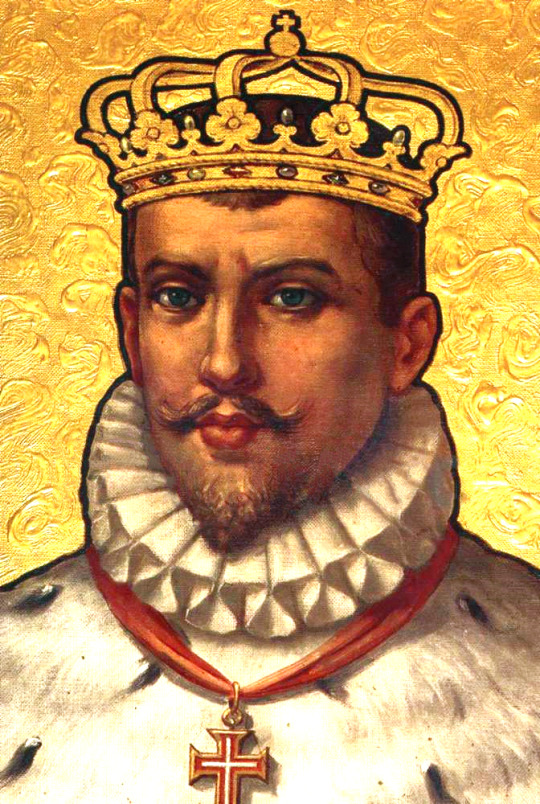

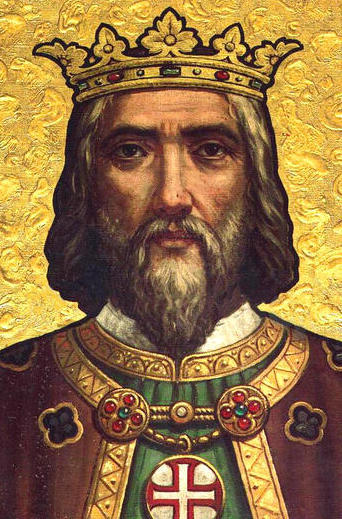
Portuguese monarchs: The House of Aviz.
#kingdom of portugal#reino de portugal#house of aviz#reis de portugal#john I#edward I#Afonso V#john ii#manuel I#john iii#sebastian I#list of monarchs#quinta da regaleira#sala dos reis
9 notes
·
View notes
Text

I knew that the Catholic Church via the Pope had authorized slavery in the 1400s, but I didn’t know that they had authorized the eradication, subjugation, etc, of African people. Somehow I never connected the two.
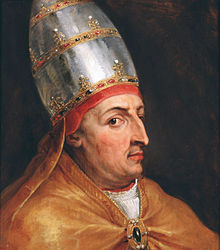
“We grant you [Kings of Spain and Portugal] by these present documents, with our Apostolic Authority, full and free permission to invade, search out, capture, and subjugate the Saracens and pagans and any other unbelievers and enemies of Christ wherever they may be, as well as their kingdoms, duchies, counties, principalities, and other property […] and to reduce their persons into perpetual servitude.”
These clearly refers to the lands along the coast of West Africa. By these decree, Pope Nicholas V conceded to the King of Portugal Afonso V and Prince Henry and all their successors, all their conquests of Africa, and reduction to perpetual servitude of all people deemed non-believers and enemies of Christ, and all their properties.
A significant subsequent concession given by Nicholas V in a brief issued to King Alfonso in 1454 extended the rights granted to existing territories to all those that might be taken in the future. Together with a second reference to some who have already been enslaved, this has been used to suggest that Nicholas sanctioned the purchase of black slaves from “the infidel”: “… many Guineamen and other negroes, taken by force, and some by barter of unprohibited articles, or by other lawful contract of purchase, have been … converted to the Catholic faith, and it is hoped, by the help of divine mercy, that if such progress be continued with them, either those peoples will be converted to the faith or at least the souls of many of them will be gained for Christ.”
This bull is currently conserved at the Institute of the National Archives of Torre do Tomba in Lisboa, Portugal, under the reference PT/TT/BUL/0007/29 and is fully translated to French in the book “le Péché du pape contre l’Afrique” (The Sin of the Pope against Africa) (éd. Al qalam, Paris, 2002) de Assani Fassassi, P. 10 – 21.
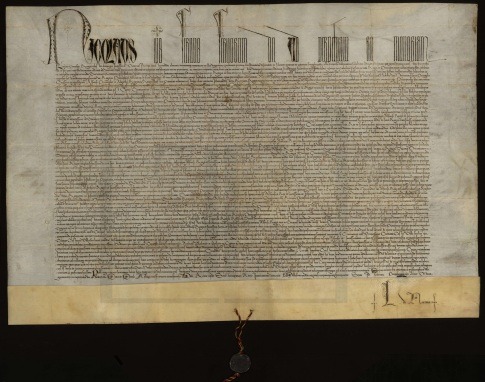
#catholics and slavery#pope nicholas v#dum diversas#Dum Diversas or The Vatican’s Authorization of Slavery#who started slavery of Africans#Enslaved Africans#catholic church is paying Reparations#Reparations
52 notes
·
View notes
Text
Thread about Joanna of Castile: Part 8.2: “A Mother's Distress: Juana's Turbulent Departure from the Castle”
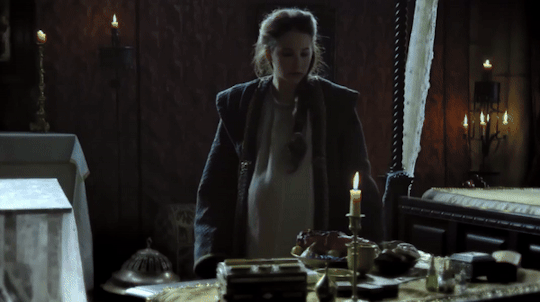



Guessing that her mother was trying every trick she could think of to
keep her, Juana abandoned pleading and talking. Instead, she staged an astonishing display of histrionic, even hysterical, behaviour, indulging in tactics she would employ for the rest of her life whenever she was thwarted or powerless. She refused to eat, to talk, or to sleep, she attempted to force a ship’s captain to prepare to sail.
On a cold November night, Juana fled, half-clad, from the castle.
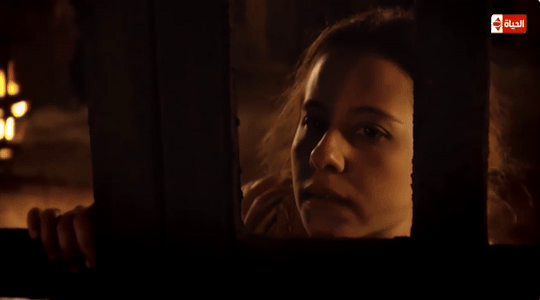





When she realised that Isabel had ordered that the gates be shut, she
“Remained in the outer precinct of the house all evening and all night and all the next day until the second hour in the humidity and night dew and without either hat or coat, during one of the coldest nights of the year so far, and not for a moment would she return to her room.”
She even threatened the bishop with death and torture for keeping her locked up.
Martire describes her prowling the outer precincts of the castle like “an African lion.”
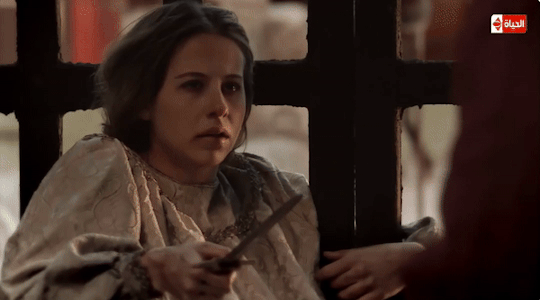

The international fair was in full swing, with the saddle and leather workers engaging in trade close to the castle walls. Concerned that Juana’s departure would cost her authority and reputation, Isabel sent a series of high-ranking emissaries, including Cisneros, in vain attempts to persuade her to return inside.

In the end, Isabel had to come in person:
“With more effort and haste, and making longer days of it than I knew was good for my health.”
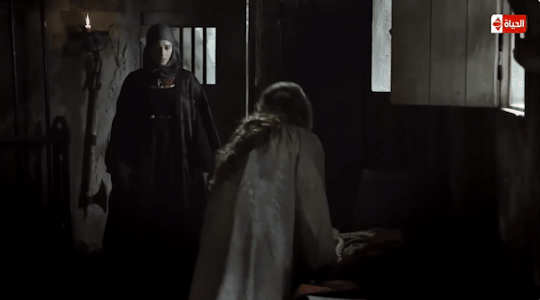
But Juana :
“Spoke to me so heatedly and with words so disrespectful and so far, beyond what a daughter should say to a mother, that had I not seen the state she was in I would not have tolerated it for a moment.”

We do not have Juana’s account. Did she, when arguing with her mother, venture into the darker territory of Isabel’s past? Might she even have referred to Isabel’s role in the descasamiento of Afonso V of Portugal and Juana (‘la Beltraneja’) of Castile when the war of the Castilian succession of 1475–1479 ended in their defeat? The heir to the throne of Castile, Enrique IV's daughter and heir, was still confined to monastic confinement in Portugal in 1503, but she would never give up her claim to the crown.
On 2 December 1503, Lope de Conchillos wrote to his uncle, Fernando's secretary, Miguel Pérez de Almazán, that Isabel was well but “very afflicted and tired” of the princess.
In March 1504, Juana was finally allowed to leave the country. In the end, her tantrums worked. The bishop of Catania, Diego Ramirez de Guzmán, was sent with her to strengthen the Spanish diplomatic presence in Brussels. Moreover, Diego Ramirez de Villaescusa, bishop of Málaga, did not accompany her.


Juana’s journey, from beginning to end, was a reversal of the first. There were no tears when she left Laredo, but Philip eagerly awaited her at Blankenburg/Blankenberge.
While Isabel wondered if she would stay as unhappy as she was while she was here, she was the talk of the Low Countries. Juana's decision to leave Castile would have big effects on her future and the kingdoms she ruled.
Sources: Fleming, G. B. (2018). Juana I: Legitimacy and Conflict in Sixteenth-Century Castile (1st ed. 2018 edition). Palgrave Macmillan.
Fox, J. (2012). Sister Queens: The Noble, Tragic Lives of Katherine of Aragon and Juana, Queen of Castile. Ballantine Books.
Gómez, M. A., Juan-Navarro, S., & Zatlin, P. (2008). Juana of Castile: History and Myth of the Mad Queen. Associated University Presse.
#joanna of castile#juana i of castile#philip the handsome#juana la loca#isabel#juana the mad#juana of castile#johanna van castilie#irene escolar#spanish monarchy#spanish princess#infanta#spain#philip de schone
8 notes
·
View notes
Text









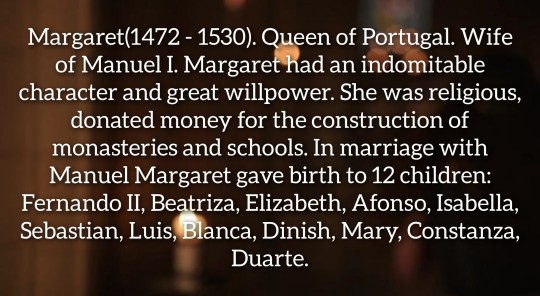
AU House of York: Children Edward IV and Elizabeth Woodville.
Elizabeth(1466 - 1520). Queen of France. Wife of Louis XII and mother of 10 children: Charles IX, Mary, Elizabeth, Louis, Madeleine, Jean, Guillaume, Philip, Jeanne and Bonne. Although their marriage was arranged for political reasons, it turned out to be a successful one. Elizabeth had no political influence as queen. She also devoted much attention to the education and upbringing of her children.
Mary(1467 - 1523). Queen of Denmark. Wife of Frederick I. Mary, as her older sister, was not interested in politics. The married life of Mary and Frederick was a happy one. He loved her for the fact that she did not interfere in his state affairs. They became the parents of 7 children: Christian III, Frederick II, Hans, Dorothea, Elisabeth, Dietrich and Anne.
Cecily(1469 - 1529). Queen of Scots. Wife of James IV, mother of 4 children: Marjorie, Anabella, Sibylla, Robert IV. The married life of the royal couple was not a happy one. Because of Jacob's constant infidelities, the couple became more and more distant from each other. The queen tried to influence the king's policy, but her attempts were unsuccessful.
Edward V(1470 - 1537). King of England. Husband of Isabella of Aragon. Edward's domestic and foreign policies were not successful. During his reign, nepotism and treasury increased in England, and he intervened in military conflicts of other countries. Isabella and Edward had a cool relationship. The marriage produced 5 children: Jacquetta, William IV, Isabella, Thomas and Henry.
Margaret(1472 - 1530). Queen of Portugal. Wife of Manuel I. Margaret had an indomitable character and great willpower. She was religious, donated money for the construction of monasteries and schools. In marriage with Manuel Margaret gave birth to 12 children: Fernando II, Beatriza, Elizabeth, Afonso, Isabella, Sebastian, Luis, Blanca, Dinish, Mary, Constanza, Duarte.
AU: Дети Эдуарда IV и Елизаветы Вудвилл.
Елизавета(1466 - 1520). Королева Франции. Жена Людовика XII и мать 10 детей: Карл IX, Мария, Елизавета, Людовик, Мадлен, Жан, Гильом, Филипп, Жанна и Бонна. Несмотря на то, что их брак был заключён по политическим соображениям, он оказался удачным. Елизавета не имела никакого политического влияния как королева. Также она уделял много внимая образованию и воспитанию своих детей.
Мария(1467 - 1523). Королева Дании. Жена Фредерика I. Марию, как её старшую сестру, не интересовала политика. Супружеская жизнь Марии и Фредерика была счастливой. Он полюбил её за то, что она не вмешивалась в его государственные дела. Они стали родителями 7 детей: Кристиан III, Фредерик II, Ганс, Доротея, Елизавета, Дитрих и Анна.
Сесилия(1469 - 1529). Королева Шотландии. Жена Якова IV, мать 4 детей: Марджори, Анабелла, Сибилла, Роберт IV. Супружеская жизнь королевской четы была не счастливой. Из-за постоянных измен Якова, супруги все дальше и дальше отдалялись друг от друга. Королева пыталась в влиять на политику короля, но её попытки остались без успешны.
Эдуард V(1470 - 1537). Король Англии. Муж Изабеллы Арагонской. Внутренняя и внешняя политика Эдуарда была не удачной. При его правлении в Англии увеличилось кумовство и казнокрадство, а также он вмешивался в военные конфликты других стран. У Изабеллы и Эдуарда были прохладные отношения. В браке родилось 5 детей: Жакетта, Вильгельм IV, Изабелла, Томас и Генрих.
Маргарита(1472 - 1530). Королева Португалии. Жена Мануэля I. У Маргарет был несгибаемый характер и большая сила воли. Была религиозна, жертвовала деньги на строительство монастырей и школ. В браке с Мануэлем Маргарита родила 12 детей: Фернанду II, Беатриса, Елизавета, Афонсу, Изабелла, Себастьян, Луиш, Бланка, Диниш, Мария, Констанса, Дуарте.
Part 1.
#history#history au#royal family#royalty#british royalty#british royal family#british#history of england#english history#england#english#house of york#au#elizabeth of york#the white princess#the white queen
8 notes
·
View notes
Text
Introduction
Do you have opinions on the Serene House of Bragança (or Braganza) Do you wish to join the Brigantine Dynasty as it streches from East Timor to Brazil. Do you wish to eat Caldo Verde in a hot day in Portugal. Do you enjoy seeing drama, plotting, consorts more interesting than their Bragança husbands and the glory that is coming to Brazil? If so this defunct house of rulers that has had claimants and candidates to the thrones of Greece and Poland, as well as Monarchs of Portugal and royal consorts that have provided Monarchs such as Ferdinand of Romania? Dilettantes including the Infante Manuel de Bragança? and of course the Glorious Kings of Portugal and the Emperors of Brazil? If so, come to Brazil Join the tournament to discover the best Bragança!
Listen we may not be as dramatic as the Habsburgs or the Bourbons, but in terms of drama, we are the little house that could (so much drama (the War of the Brothers, the scheming of Carlota Joaquina, João V and his strong love of the catholic church)
Rules:
Who will be included in your lists? Much like notable brackets of Central Europe, we will include unconventional figures who may technically be considered members of other dynasties including *sighs*...at least a few Hohenzollerns (But unlike the @best-hohenzollern-ruler bracket, these will be ROMANIAN HOHENZOLLERNS; which is better).
We will also include the consorts from other royal families whose ambitions, intellect, and force of will may have outshone their admittedly mediocre Bragança spouses (Carlota Joaquina of the Bourbons is fascinating as is Maria Leopoldina of Austria)
Is propaganda encouraged?
Absolutely, as Lilia Schwarcz shows for Pedro II of Brazil, propaganda and pageantry are essential for the construction of the Bragança dynasty and monarchy! As such, It is also essential for this bracket!
Why is everyone a Pedro or João?
Hey, those are perfectly good names....but we also have two Marias who reigned in their own right (Actually, a lot more Marias in this bracket!) We also have some Afonsos
What regnal numbers will you be using?
Honestly, we will be using the Portuguese regnal numbers up until Pedro II of Brazil, who will have emperor in his title to distinguish him (Pedro I of Brazil/ IV of Portugal will have both)/ We will also include a few dukes.
Which language will you be using for the names?
Portuguese....do you really want to deal with a bunch of Johns and Peters?
How would you like it if, say a Habsburg Bracket, called Franz Joseph
Francisco José? It would be weird.
What is your relation to @best-hohenzollern-ruler, @best-habsburg-monarch, and the @best-bourbon-monarch?
Much like the Duke João of Braganza ( the future King João IV of Portugal) we bravely broke off from the @best-habsburg-monarch's bracket to form our own path! However, as is our want, we deeply appreciate the Habsburgs, the Bourbons, and the Hohenzollerns. Thus, we have maintained our propensity to intermarry into each of these families and their membership has joined us as well. So @best-hohenzollern-ruler @best-bourbon-monarch and @best-habsburg-monarch, friends? Also, @rulers-of-poland-tournament, Infante Manuel de Bragança really thinks y'all are swell!
10 notes
·
View notes
Text

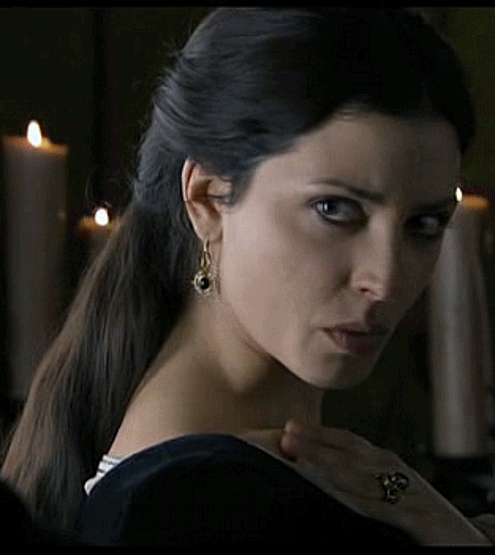

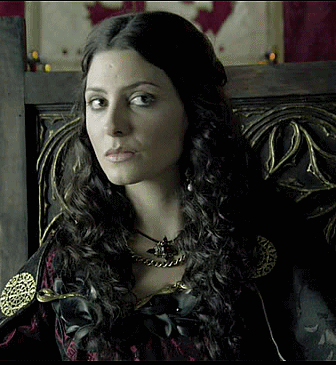
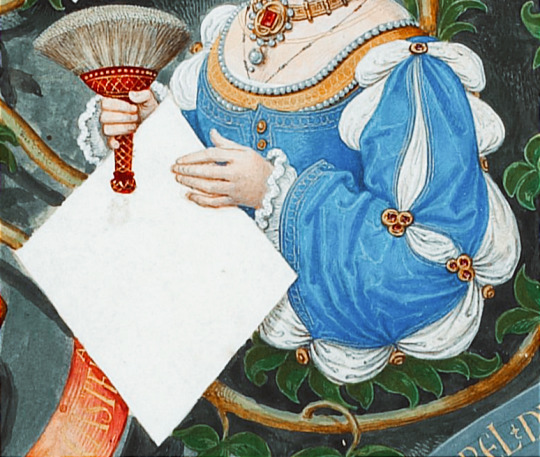
Juana of Portugal (1439-1475)
She was the posthumous daughter of King Duarte of Portugal and his wife Leonor of Aragon. Juana grew up in exile with her mother, due to the intrigues of the Portuguese court, and lived first at the Monastery of Santa María in Medina del Campo and later in Toledo, where Leonor of Aragon died. At the age of six, Juana returned to the Portuguese court of her brother Afonso V.
In 1455 the young Juana married her cousin Enrique IV of Castile, who had repudiated his first consort after thirteen years of marriage. The couple produced no children. The marriage was annulled on the grounds of an impotence that was specific rather than general, an impotence that applied only to Enrique’s relationship with Blanca of Navarre. Yet such an extraordinary explanation amounted to a case of maleficium (spell), with the clear implication that Blanca was the guilty party, and in addition she was obliged to leave Castile and return to Navarre.

Juana of Portugal was described as beautiful, cheerful and coquettish. The sources speak of the licentiousness introduced by the young Queen and her ladies in the austere Castilian court. They liked to use perfums, makeups, dresses that displayed too much décolletage, and flirting with men. One of her ladies, Guiomar de Castro, was King’s mistress, causing the anger of the Queen, and other, Mencía de Lemos, was Cardinal Mendoza’s mistress.
Six years after her wedding, Queen Juana was pregnant. Some say it was a miracle, others that it was the result of some sort of artificial insemination that the couple had tried, as was recorded by a german traveler. During this period, Juana insisted that Enrique's teenaged brother and sister, Alfonso and Isabel, forcefully be brought to the court and away from their sick mother. Many saw this as a way of making sure her daughter's path to the crown would encounter no obstacles. The Queen gave birth to a daughter named Juana, officially proclaimed heir to the Crown of Castile and created Princess of Asturias.
Queen Juana planned the marriage between her sister-in-law, Isabel of Castile, and her brother Afonso V of Portugal, and her daughter with her nephew Prince Joao. She wanted with these weddings an annexation of the Crown of Castile with the kingdom of Portugal.
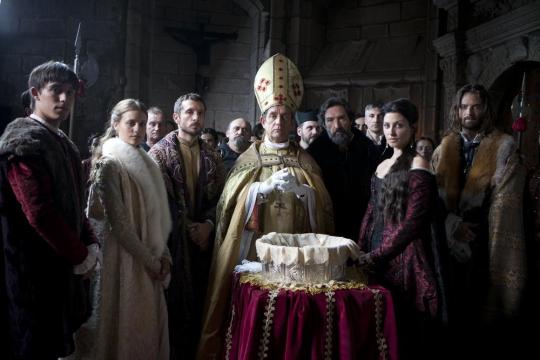
In early 1460s, Castilian nobles became dissatisfied with the rule of Enrique IV, and believed that Princess Juana was not King’s daughter. They called her la Beltraneja, a mocking reference to her supposed illegitimacy. Propaganda and rumour encouraged by the league of rebellious nobles argued that her father was Beltrán de la Cueva, a royal favorite of low background who had been elevated to enormous power by Enrique and who, by some, has been suggested as Enrique's lover.
Many nobles refused to recognise Princess Juana and preferred that Enrique instead name his younger half-brother, Alfonso as his heir. This was agreed to on the condition that Alfonso marries little Juana. Not long after this, Enrique reneged on his promise and began to support his daughter's claim once more. The nobles in league against him conducted a ceremonial deposition-in-effigy of Enrique outside the city of Avila and crowned Alfonso as a rival king.
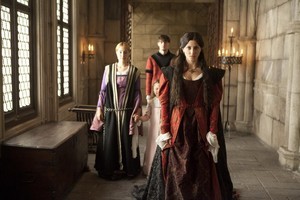
Queen Juana and her daughter were removed from the court. They lived in various castles as hostages, separately or together, protected by a faction of the nobility. The love affair of Queen Juana with the Bishop Fonseca’s nephew, Pedro of Castile, and the birth of her two illegitimate sons, caused great scandal. As a result of the need to conceal the pregnancy of her illegitimate sons, Juana of Portugal is considered the inventor of the farthingale.
In 1468, Alfonso of Castile died and Princess Juana was stripped of her succession-rights. Her aunt, Infanta Isabel, was placed before her, on condition that Isabel marry a man chosen out by the monarch. Queen Juana and her daughter sent a formal appeal to the Supreme Pontiff. Enrique accepted to divorce his wife and send her to Portugal, but Juana remained in Castile as king's wife, though separated of her husband. Isabel married Fernando of Aragon with the opposition of Enrique IV.
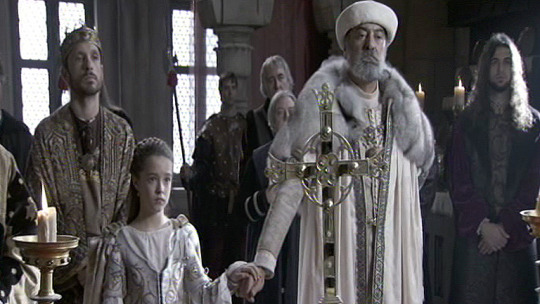
In 1470, Princess Juana was engaged and then married by proxy to the Duke of Guienne, brother of Louis XI of France. In the face of the French ambassador, King Enrique and Queen Juana swore before a crucifix that the Princess was their legitimate daughter. The French marriage never consummated, because the duke died two years later in France. Queen Juana always defended her daughter’s rights to the throne, and she had an active political participation. Queen Juana tried to get the support of nobles and cities, but with meager success and without palpable results. In 1474, Enrique IV died at the Alcázar of Madrid and rumors circulated that the late monarch had been poisoned, his wife and his daughter demanded an investigation. Queen Juana died a few months after her husband’s death at the age of 36. In the last months of her life, she lived at the convent of San Francisco in Madrid. The cause of her death is unknown.
Bárbara Lennie played Juana of Portugal in TV series "Isabel"
#juana de portugal#juana de avis#joan of portugal#women in history#spanish history#barbara lennie#Isabel tve#enrique IV#juana la beltranejs#juana de trastamara#juana de castilla
24 notes
·
View notes
Text
We grant you by these present documents, with our Apostolic Authority, full and free permission to invade, search out, capture, and subjugate the Saracens and pagans and any other unbelievers and enemies of Christ wherever they may be, as well as their kingdoms, duchies, counties, principalities, and other property and to reduce their persons into perpetual servitude.
Pope Nicholas V authorisation to Afonso V of Portugal
#quotes#religion#Corruption#death#Servitude#catholicism#fraud#slavery#Perpetual slavery#Dum Diversas#subjugation
5 notes
·
View notes
Note
Well now I'm sad (about the paintings). Were they destroyed on purpose during battles and such, or was it normal decay?
two things, technically three
Eathrquakes being number one. I use the plural here because it wasn't just the 1755 one. That one was the strongest, but not the only one. In 1630, for example, Lisbon suffered a terrible earthquake that caused enough destruction. I believe that one was an estimated 7 or something on Richter scale
The second reason was Napoleonic invasions. And here is where ti divides into two reasons, because both the french and the english stole a lot of shit. I vividly remember asking my prof which did he think caused more destruction/disappearance of artoworks overall, the earthquake or the invasions, and he considered it for a while and came to the conclusion that it was both. We know for a fact that the french stole a lot of works from monasteries mostly. But the english did so to. They vandalised a lot of stuff, and a lot of paintings disappeared. We had Van Der Weydens in the country that vanished, and we know they existed because we have every documentation (sometimes even drawing reproductions) except the painting.
It would also justify why Portugal seemingly has no paintings of its kings and queens before John I, and even after that, until Manuel I it's like paintings of kings and quees are a rarity. Which does not make sense. Leonor, wife of John II, would have a court painting sent to her cousin Maximillian, emperor of the holy roman empire or whatever it was called. But we have exactly two depictions left of her, both as a widow, one in a painting and one on a mural. Before her, only Isabella of Portugal, Duchess of burgundy, and Philippa of Lancaster have paintings, though the latter is in illuminated manuscripts mostly. Also Infanta Santa Joana. And as for kings, we have of John I, King Duarte (ARGUABLY BUT I'M NOT GETTING INTO IT), Afonso V and some other infantas. Many of them illuminated manuscripts too.
To quote my professor, who was honestly one of the best profs I had, "I bet my ass there's a painting of an unknown lady somewhere in the Louvre's reservoirs that is Queen Leonor"
#the 1755 earthquake was also the most advertised#because it had significance in the enlightnment era#and caused a significant shift in europe regarding schools of thought
9 notes
·
View notes
Photo

O Rei Haakon VII de Noruega, o tsar Fernando I de Bulgaria, el-Rei Manuel II de Portugal e os Algarves, o káiser Guillerme II de Alemaña e Prusia, o Rei Xorxe I dos Helenos e o Rei Alberto I dos Belgas. Sentados, os reis Afonso XIII de España, Xorxe V do Reino Unido e Frederico VIII de Dinamarca en Windsor durante os funerais por Eduardo VII
10 notes
·
View notes
Photo

Infanta Isabel of Coimbra (1 March 1432 – 2 December 1455) was a Portuguese infanta and Queen of Portugal as the first spouse of King Afonso V of Portugal.
2 notes
·
View notes
Text
Ordem De Cristo/Quisty ,desde a-não em Recife/PErnambuco em 1500.

A Ordem de Nosso Senhor Jesus Cristo originalmente era uma ordem religiosa e militar, criada a 14 de março de 1319 pela bula pontifícia Ad ea ex quibus cultus augeatur do Papa João XXII, que, deste modo, atendia aos pedidos do rei Dom Dinis. Recebeu o nome de Ordem dos Cavaleiros de Nosso Senhor Jesus Cristo[1] ou Ordem da Milícia de Nosso Senhor Jesus Cristo[2] e foi herdeira das propriedades e privilégios da Ordem do Templo.
Em Maio desse mesmo ano, numa cerimónia solene que contou com a participação do Arcebispo de Évora, do Alferes-Mor do Reino D. Afonso de Albuquerque e de outros membros da cúria régia, o rei Dom Dinis ratificou, em Santarém, a criação da nova Ordem.
Foi-lhe concedida como sede o castelo de Castro Marim; mas em 1357 já a sede tinha sido instalada em Tomar, anterior sede templária.[3]
Em 1789 a Ordem de Cristo foi secularizada, tornando-se uma ordem honorífica até sua extinção, em 1910, com a implantação da República Portuguesa. A ordem foi refundada em 1917 como a Ordem Militar de Cristo e é presidida pelo seu grão-mestre, o Presidente da República Portuguesa.
Antecedentes e criação
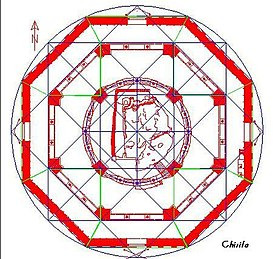
Planta do Templo de Salomão e algumas de suas linhas de construção que podem ter servido de inspiração para a arquitetura dos Templários

Grafismo da geração da Cruz da Ordem de Cristo
Nos séculos XII e XIII, a Ordem dos Templários ajudou os portugueses nas batalhas contra os muçulmanos, recebendo como recompensa extensos domínios e poder político. Os castelos, igrejas e povoados prosperaram sob a sua protecção. Em 1314, o papa Clemente V de origem francesa e Felipe IV de França, tentaram destruir completamente esta rica e poderosa ordem, tendo D. Dinis logrado transferir para a Ordem de Cristo as propriedades e privilégios dos Templários.
A Ordem de Cristo foi assim criada em Portugal como Ordo Militiae Jesu Christo pela bula Ad ae exquibus de 15 de março de 1319 pelo papa João XXII, sendo rei D. Dinis, pouco depois da extinção da Ordem do Templo. «Tratava-se de refundar a Ordem do Templo que anterior bula papal de Clemente V havia condenado à extinção».[3]
Diz a mesma obra:[3] «Em Portugal, os bens dos Templários ficaram «reservados» por iniciativa do rei, transitando para a coroa entre 1309 e 1310, enquanto decorria o «processo», não sem que o monarca rejeitasse o administrador nomeado por Clemente V - Estêvão de Lisboa. Esses mesmos bens passaram indemnes para a nova congregação em 26 de novembro de 1319, sendo que o papa concedera a excepção aos reis de Castela e Leão, Aragão e Portugal, que se coligaram para contrariar a execução da medida que ordenava a sua transferência para a Ordem do Hospital.» «Por Carta Régia feita em Santarém, a 26 de Novembro da era de 1357 (15 de Novembro de 1319), se mandou fazer a entrega a D. Gil Martins, 1º Mestre da Ordem de Cristo, de todos os bens, rendas e direitos que foram da Ordem do Templo, tanto Espirituais, Temporais, e dívidas.»[4]
A nova Ordem surgia, assim como uma reforma dos Templários. Tudo mudou, para ficar mais ou menos na mesma. O hábito era o mesmo, a insígnia também, com uma ligeira alteração, e os bens, transmitidos pelo monarca, correspondiam aos bens templários. «Foi-lhe dada a regra cisterciense», continua a mesma Enciclopédia, «e nomeado mestre D. Gil Martins, igualmente mestre da Ordem de Avis, que adoptara a regra cisterciense, com a determinação de que os novos monges elegessem seu próprio mestre, depois da morte daquele. O superior espiritual da Ordem de Cristo era o abade de Alcobaça.»
A 11 de junho de 1421, um capítulo reunido em Tomar adoptou como regra da Ordem de Cristo a da Ordem de Calatrava, o que resolvia quaisquer pendências de natureza espiritual e de obediência, mantendo-se na esfera da cavalaria.
As viagens marítimas

Mapa onde mostra Macau e a sua posição nas rotas comerciais portuguesas e espanholas, no seu período mais próspero (finais do século XVI e princípios do século XVII)
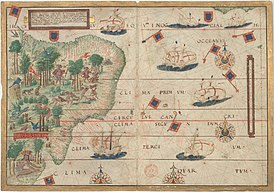
A Cruz da Ordem de Cristo marcava as velas das caravelas que exploravam os mares desconhecidos
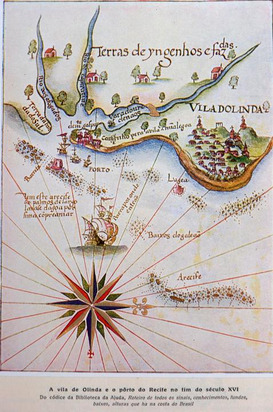
A vila de Olinda e o porto do Recife no fim do século XVI. Do códice da Biblioteca da Ajuda: Roteiro de todos os sinais, conhecimentos, fundos, baixos, alturas que há na costa do Brasil
O cargo de mestre passara após 1417 a ser exercido por membros da Casa Real, que se passaram a nomear administradores e governadores por nomeação papal.
O primeiro foi o infante D. Henrique, que a encaminhou para o que parecia ser sua missão inicial, a de conquista da Ásia através das viagens marítimas, que a própria ordem financiou.[5]
Os ideais da expansão cristã reacenderam-se no século XV quando seu Grão-Mestre, Infante D. Henrique, investiu os rendimentos da Ordem na exploração marítima.
O emblema da ordem, a Cruz da Ordem de Cristo, adornava as velas das Caravelas e Naus que exploravam os mares desconhecidos.
O resultado disso é que em 1454 e 1456, através de bulas do Papa Nicolau V e do Papa Calisto III respectivamente, é concedido ou dada obrigação à Ordem de Cristo de estabelecer o direito espiritual sobre todas as terras descobertas, como territórios nullius diocesis, sendo sua sede diocesana a Igreja de Santa Maria do Olival, em Tomar.
A Companhia de Jesus
A Companhia de Jesus (em latim: Societas Iesu, S. J.), cujos membros são conhecidos como jesuítas, é uma ordem religiosa fundada em 1534 por um grupo de estudantes da Universidade de Paris, liderados pelo basco Íñigo López de Loyola, conhecido posteriormente como Inácio de Loyola.

A Congregação foi reconhecida por bula papal em 1540.[6] É hoje conhecida principalmente por seu trabalho missionário e educacional durante as viagens marítimas.
Reforma sob D. João III
A organização interna consagrada desde os tempos de D. Dinis (a de freires cavaleiros ou milites Christi) foi reformada sob D. João III em 1529, passando a Ordem à estrita clausura.
Em 1531, pela Bula «Exposcit debitum», dada em Roma, a 30 de Junho, o Papa Clemente VII, confirmou a reforma realizada no Convento de Tomar por Frei António de Lisboa, concedendo-lhe poder para elaborar regras e estatutos (de parceria com outros padres jerónimos a quem o rei desse o seu consentimento) a serem aprovados pela Sé Apostólica.[2]
Mantiveram-se porém associadas à Ordem de Cristo «uma relação privilegiada com o mundo dos símbolos e ligações à produção poética dos chamados bucolistas, que reencenariam «uma relação que já se intuira existir entre os Templários e a poesia trovadoresca».
Finalmente, em 1551, pela bula "Praeclara clarissimi" do papa Júlio III, no reinado de D. João III, os Mestrados das Ordens Militares foram unidos Coroa, anexando-os "in perpertuum", passando a ser administrados pela Mesa da Consciência e Ordens que tinha sido criada em 1533.[2]
Reforma sob D. Maria I
Em 1789, a rainha D. Maria I, reformou de novo a ordem, mas esta continuou como ordem monástico-militar.
Extinção
Com a extinção das ordens religiosas em 1834, também a Ordem de Cristo foi extinta. A maior parte dos seus bens foram expropriados e vendidos em praça pública.
D. Maria II constituiu-a em ordem honorífica.
Em 1910, com a implantação da República, foi extinta, sendo reformulada em 1918.
Esta ordem tem apenas cinco graus: cavaleiro ou dama, oficial, comendador, grande-oficial e grã-cruz.
Actualidade
Ver artigo principal: Ordem Militar de Cristo
Apesar de extinta pelo Decreto de 15 de Outubro de 1910, juntamente com as “antigas ordens nobiliárquicas”, a mesma foi restabelecida pelo Decreto de 1 de Dezembro de 1918, ficando então “destinada a premiar os serviços relevantes de nacionais ou estrangeiros prestados ao país ou à humanidade, tanto militares como civis”.
De acordo com a legislação portuguesa de 1962 e na de 1986, a Ordem Militar de Cristo continuou associada ao exercício de funções de soberania e, em especial, à diplomacia, à magistratura e à Administração Pública.
Na legislação de 2011, voltou-se à referência mais genérica ao “exercício das funções de soberania”.
Ao longo do século XX foram agraciados com a Ordem Militar de Cristo os titulares dos mais altos cargos da nação portuguesa.
Em Visitas de Estado é frequentemente concedida aos cônjuges dos Chefes de Estado e, ocasionalmente, aos próprios Chefes de Estado, como a Presidente Michelle Bachelet, agraciada pelo Presidente Cavaco Silva em 2009.[7]
https://pt.wikipedia.org/wiki/Ordem_de_Cristo
0 notes
Text
Berlengas, a trip to the islands
The Berlengas Natural Reserve, off Peniche, is one of the best places for diving and birdwatching in Portugal.
The confluence of the Mediterranean and Atlantic climates created a unique ecosystem in the world with characteristic fauna and flora, together with a geomorphology distinct from that of the European continent, in the Berlengas Islands.
Biological wealth is priceless. The fauna and flora are unique, which makes Berlengas a biological heritage of high conservation interest. Recognized since 1465, in a letter from King D. Afonso V – “in the Berlengas of the sea no one goes hunting”, the archipelago is the first protected area in the country, for over 30 years a Natural Reserve, and recognized by🏛️UNESCO🏛️since 2011 .
To visit the Berlengas islands – or, better, to go to Berlenga Grande, the largest island in this archipelago – you need to take a boat in Peniche. You will also find on land, in Peniche, different means of maritime transport to access Berlengas. The trip lasts about 30 minutes, but considering the view and landscape ahead, you won't even notice the time passing by.
When you start to approach the Berlengas archipelago, the first view is of a pile of rocks and rocks, which seem to be unattractive and touristy. But just get off the boat and start walking around the island to quickly understand the magic of this place that mixes absolutely paradisiacal beaches with majestic rocks. This archipelago is made up of three islets (Berlenga Grande, Estelas and Farilhões-Forcadas), the first being the largest and the one that deserves a more in-depth visit.
instagram
0 notes
Text
【人物故事】Isabella of Portugal-滿城的康乃馨,訴說著恆久的愛
葡萄牙的伊莎貝拉是西班牙天主教雙王的外孫女,兩老在連續失去數個繼承人後,據說希望伊莎貝拉(Isabella of Portugal)和他們的另一個外孫及未來的繼承人查理五世(Charles V, Holy Roman Emperor)結婚,以求伊比利半島上兩大勢力的和平。但這個望被實現之前,伊莎貝拉和查理各自都有潛在的結婚人選。
伊莎貝拉畫像
伊莎貝拉的父親是葡萄牙國王曼紐一世(Manuel I of Portugal),在他繼承姪子若昂二世(John II of Portugal)的王位前,幾經波折。若昂二世唯一的合法兒子阿方索(Afonso, Hereditary Prince of Portugal)因意外早逝,他曾經希望將自己的私生子豪爾赫(Jorge de Lencastre)立為王儲,畢竟他的曾祖父若昂一世(John II of…
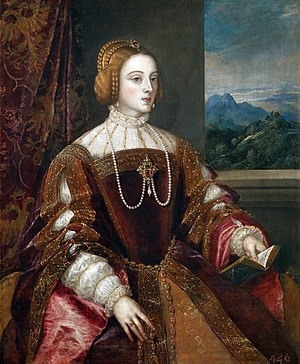
View On WordPress
0 notes
Text
Events 9.4 (before 1900)
476 – Romulus Augustulus is deposed when Odoacer proclaims himself "King of Italy", thus ending the Western Roman Empire.
626 – Li Shimin, posthumously known as Emperor Taizong of Tang, assumes the throne over the Tang dynasty of China.
929 – Battle of Lenzen: Slavic forces (the Redarii and the Obotrites) are defeated by a Saxon army near the fortified stronghold of Lenzen in Brandenburg.
1260 – The Sienese Ghibellines, supported by the forces of Manfred, King of Sicily, defeat the Florentine Guelphs at Montaperti.
1282 – Peter III of Aragon becomes the King of Sicily.
1479 – The Treaty of Alcáçovas is signed by the Catholic Monarchs of Castile and Aragon on one side and Afonso V and his son, Prince John of Portugal.
1607 – The Flight of the Earls takes place in Ireland.
1666 – In London, England, the most destructive damage from the Great Fire occurs.
1774 – New Caledonia is first sighted by Europeans, during the second voyage of Captain James Cook.
1781 – Los Angeles is founded as El Pueblo de Nuestra Señora La Reina de los Ángeles (The Village of Our Lady, the Queen of the Angels) by 44 Spanish settlers.
1797 – Coup of 18 Fructidor in France.
1800 – The French garrison in Valletta surrenders to British troops who had been called at the invitation of the Maltese. The islands of Malta and Gozo become the Malta Protectorate.
1812 – War of 1812: The Siege of Fort Harrison begins when the fort is set on fire.
1827 – The Great Fire of Turku almost completely destroys Finland's former capital city.
1839 – Battle of Kowloon: British vessels open fire on Chinese war junks enforcing a food sales embargo on the British community in China in the first armed conflict of the First Opium War.
1862 – American Civil War Maryland Campaign: General Robert E. Lee takes the Army of Northern Virginia, and the war, into the North.
1867 – Sheffield Wednesday Football Club are founded at the Adelphi Hotel in Sheffield becoming one of the first football clubs in the world.
1870 – Emperor Napoleon III of France is deposed and the Third Republic is declared.
1882 – The Pearl Street Station in New York City becomes the first power plant to supply electricity to paying customers.
1886 – American Indian Wars: After almost 30 years of fighting, Apache leader Geronimo, with his remaining warriors, surrenders to General Nelson Miles in Arizona.
1888 – George Eastman registers the trademark Kodak and receives a patent for his camera that uses roll film.
0 notes